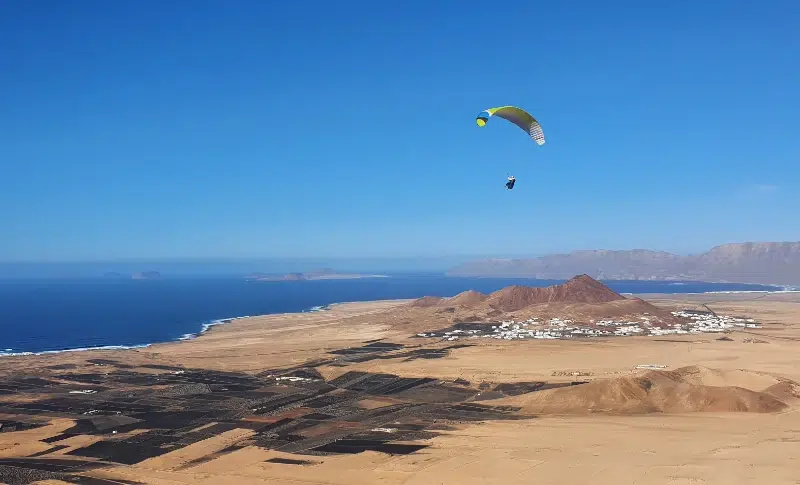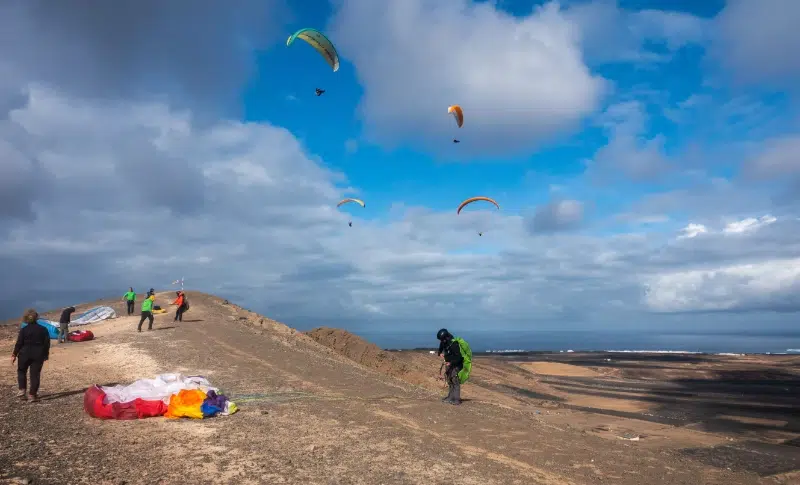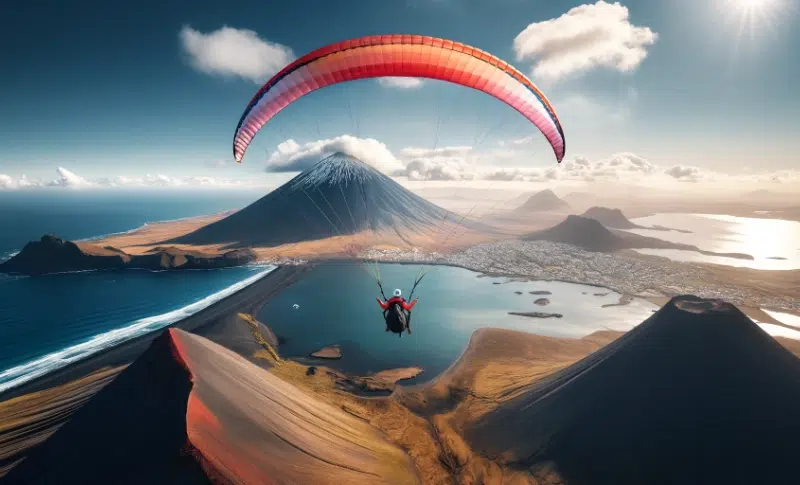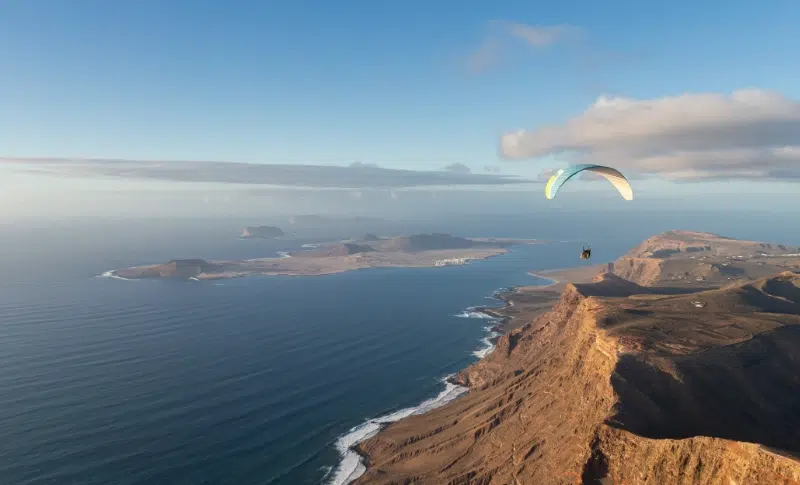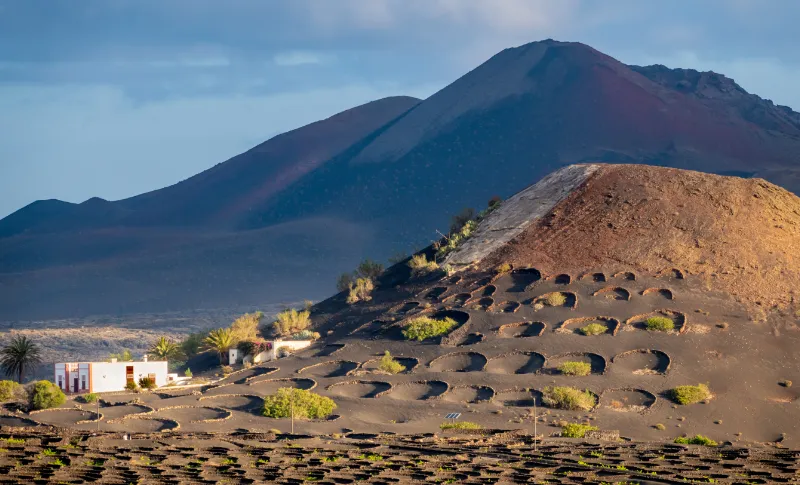
la Geria, Lanzarote’s vineyards
La Geria: Where the earth gives life to the grape. A wine-growing valley and nature park on the island of Lanzarote. La Geria, with its lunar-like terrain, is a true spectacle. The vineyards here are like no other in the world. Local wine producers are masters of the art of growing grapes in this challenging environment. If you love wine and nature, you’ll love La Geria!
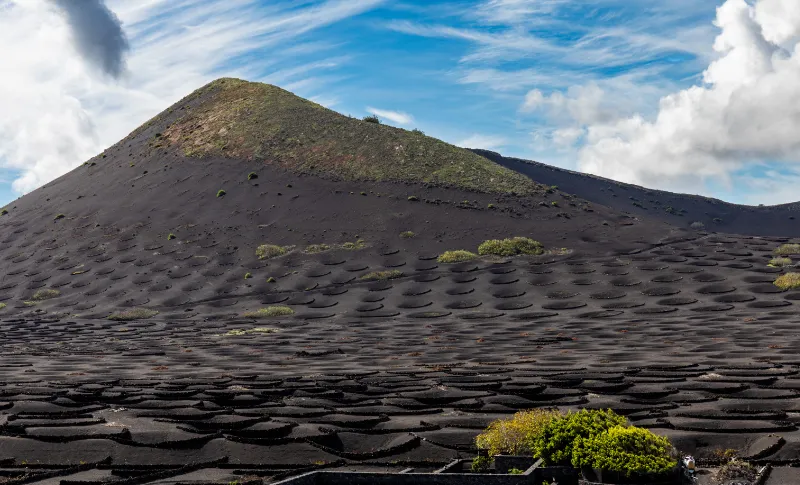
image credit @lanzabubila
THE HISTORY OF GERIA
La Geria owes its name to an ancient farming estate that belonged to the Rijo family, one of the oldest on Lanzarote. In the 18th century, the island experienced a series of volcanic eruptions that covered much of its territory in lava and ash. The inhabitants had to adapt to these extreme conditions and found an ingenious way of growing vines.
They dug holes in the layer of lapilli, a type of volcanic gravel, to reach the fertile soil below. They then planted a vine in each hole and surrounded it with a small semi-circular stone wall, called a zoco or goro. It serves to protect against wind and evaporation. In this way, the vines can capture moisture from dew and fog thanks to the lapilli, which acts as a thermal insulator.
The result is a spectacular landscape, where thousands of zocos form cells on the black soil, contrasting with the green of the vines and the blue of the sky. La Geria stretches for more than 15 kilometres between the villages of Mozaga and Uga. It covers the municipalities of Yaiza, Tinajo, Tias and San Bartolomé.
THE WINE OF LA GERIA
The wine produced in the La Geria valley is a malvasía wine. This variety originated in Greece and has adapted perfectly to the climate and terroir of Lanzarote. It’s an aromatic, fruity wine that comes in several varieties: dry white, sweet white, rosé and red. It is considered to be one of the best wines in the Canary Islands, and was awarded the Lanzarote Denomination of Origin in 1994.
Several bodegas (wine cellars) along the road through La Geria invite you to taste and buy their different wines. You can also learn about the wine-making process and admire the old wine presses and barrels.
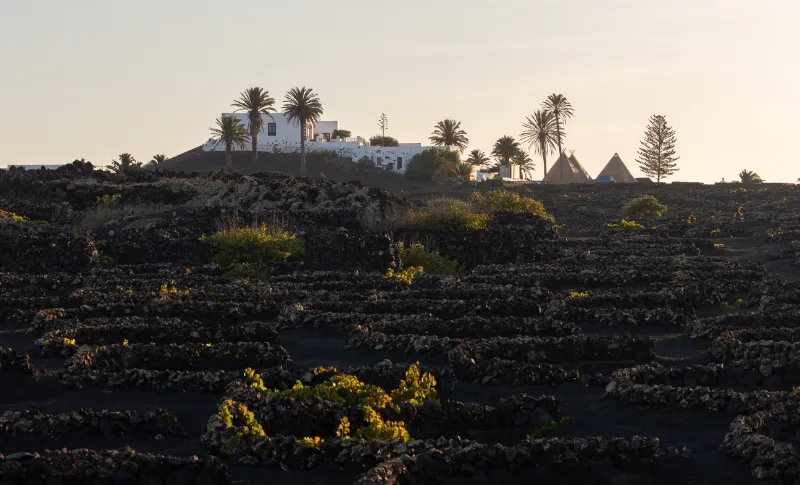
image credit @lanzabubila
Finca Testeina
A journey into organic farming, Finca Testeina is an oasis of serenity in the heart of La Geria. This unique place goes beyond simply producing wine. It’s a holistic approach to farming, promoting sustainability and biodiversity.
The finca is a testament to Lanzarote’s commitment to sustainable practices. Here you’ll find thriving vineyards and an exceptional location, while enjoying the breathtaking views of La Geria.
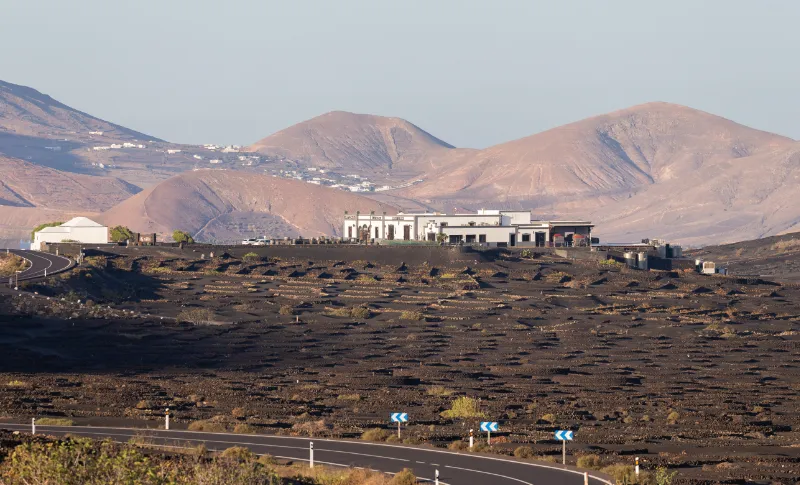
image credit @lanzabubila
bodega La Geria
Founded in 1888, it is one of the island’s oldest and most renowned wineries. It produces around 400,000 litres of wine a year, mainly malvasia, the typical Lanzarote grape variety. Bodega La Geria offers guided tours of its facilities, where you can learn about the winemaking process, as well as a tasting of its different vintages. A must for wine and culture lovers.
If you’d like to find out more about Bodega La Geria, I invite you to visit their website. You’ll find all the practical information you need to organise your visit, as well as the history and philosophy of this family-run business. You can also book your tasting online.
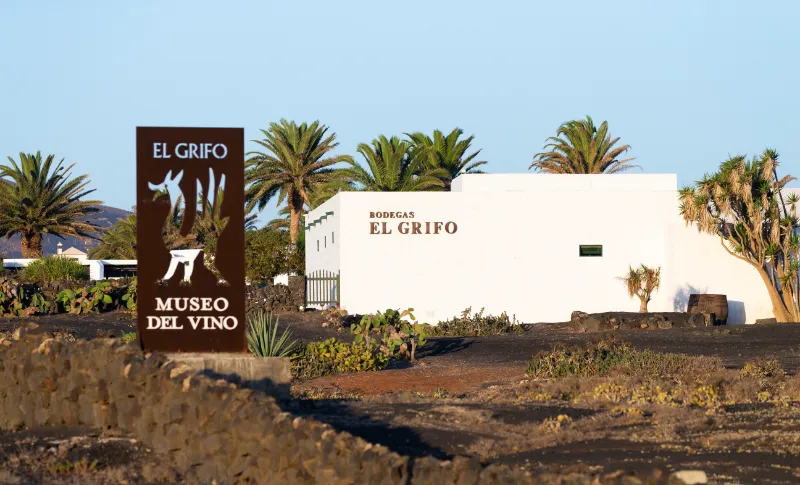
image credit @lanzabubila
Bodega El Grifo
This is the oldest bodega in the Canary Islands, founded in 1775. It takes its name from the symbol of the griffin, a mythological creature half eagle and half lion, which adorns the façade of the main building.
Bodega el Grifo is located just outside the village of Masdache, close to the El Grifo wine museum, where you can learn about the history and culture of wine in Lanzarote. It produces around 300,000 litres of wine a year, including the famous Canari Clásico, a sweet wine made according to an ancestral recipe.
The visit begins with a small museum that traces the history of winegrowing on Lanzarote and displays the tools and old machines used to produce the wine. You’ll learn that the island’s arid, windy climate makes growing vines very difficult. The inhabitants have adapted by digging holes in the volcanic ash to protect the vines from the wind and evaporation. You can also learn about the different varieties of grape grown on the island, such as malvasia, moscatel and listán negro.
After the museum, it’s on to the most interesting part: the tasting! The tour ends with a visit to the shop, where you can buy the wines you’ve tasted as well as other local products, such as honey, jam and sauces. I fell for a bottle of dry malvasia, my favourite of the tasting.
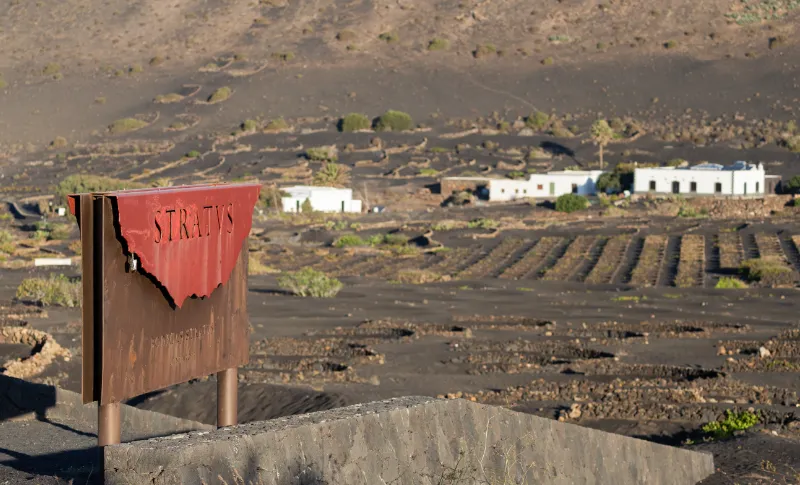
image credit @lanzabubila
bodega Stratus
It’s a magnificent place, where you can enjoy quality wines produced using environmentally-friendly methods. Bodega Stratus was founded in 2006 with the aim of producing exceptional wines in harmony with Lanzarote’s volcanic landscape.
It stands out for its avant-garde architecture. It is a semi-buried cube that blends into the landscape, using natural materials such as stone, wood and glass. The building houses the cellar, where the wines are made and aged in French and American oak barrels. There is also a tasting room where you can sample the different wines from the bodega.
I was lucky enough to take part in a guided tour of the Stratus bodega. The guide was very friendly and knowledgeable, explaining the history of the estate, the characteristics of the terroir, the winemaking process and the special features of each wine. He also introduced us to the philosophy of Bodega Stratus, which aims to respect nature and enhance the cultural heritage of Lanzarote. I have to say that I had a great time at Bodega Stratus, and would highly recommend a visit if you’re visiting Lanzarote.
Bodega Rubicon
Bodega Rubicon is a historic bodega, located in a former seventeenth-century manor house. It was renovated in 1979 and produces the delicious Rubicon Moscatel, a sweet wine made from over-ripe grapes.
Bodega Rubicon also offers guided tours of its facilities, including wine tasting. There is also a restaurant where you can enjoy typical Lanzarote cuisine, with a breathtaking view of the volcanic landscape.
If you’re a wine lover or simply curious to discover a unique heritage, I highly recommend a visit to Bodega Rubicon during your stay in Lanzarote.
PLACES TO VISIT IN LA GERIA
As well as the bodegas, La Geria also offers other attractions to discover during your visit. Here are just a few suggestions:
mirador La Geria
Is a viewpoint located on the LZ-30 road, offering panoramic views of the valley and vineyards. There’s also an explanatory panel telling you all about wine-growing on Lanzarote.
monumento al campesino
Is a monument dedicated to Lanzarote’s farmers, located in the centre of the island, near the village of Mozaga. It is a 15-metre-high sculpture created by the artist César Manrique from used water tanks. There is also an ethnographic museum, a restaurant and a craft shop.
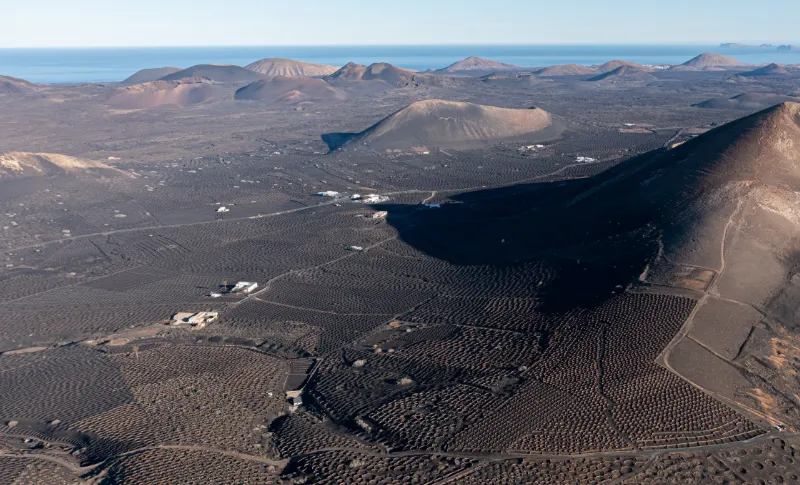
image credit @lanzabubila
HOW TO VISIT LA GERIA
The best way to visit La Geria is by car, so you can stop wherever you like and enjoy the scenery at your own pace. You can hire a car in Lanzarote easily and cheaply from the Cabrera Medina website.
If you prefer, you can also opt for an organised excursion, which will take you to La Geria’s main points of interest and let you sample the local wines.
Finally, if you’re a nature lover, you can fly over La Geria in a tandem paragliding with Abubila Paragliding. You can also hike the 7-kilometre trail through La Geria. It’s an easy, pleasant walk that will allow you to appreciate the natural beauty of La Geria.
Conclusion
La Geria is a must-see in Lanzarote, where you can discover a wine culture that is unique in the world and taste delicious wines. Don’t hesitate to visit La Geria during your stay in Lanzarote – you won’t regret it!
recent posts

